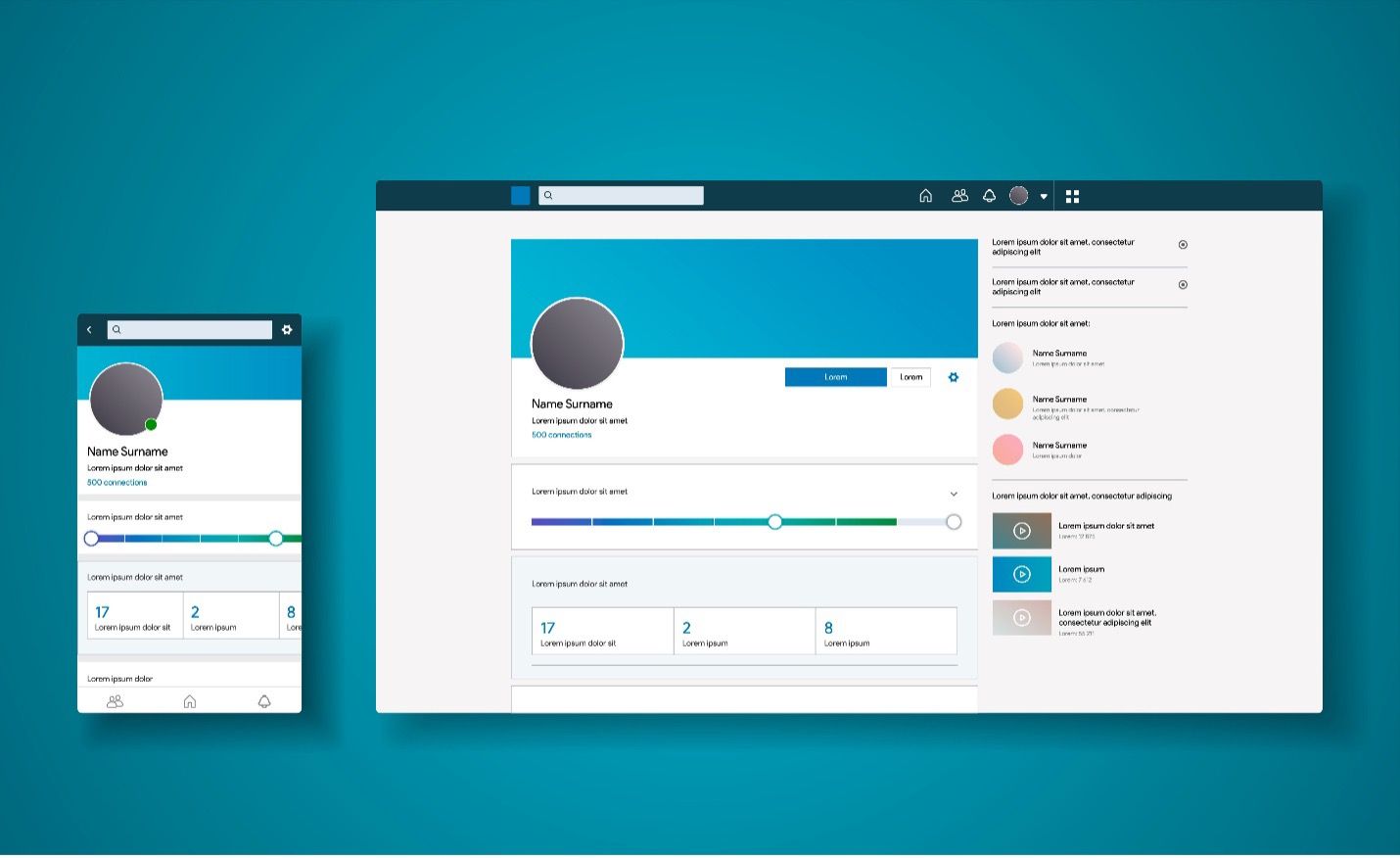
Getting a job has changed drastically over the last twenty years. Along with changes in education requirements, there has been a broadening of opportunities to network beyond traditional means. Now job seekers find success through Meetups, online conferences, and round-robin style pop-up interviews.
While these new mediums work, nothing works like old-fashioned networking, but what that looks like has changed. Tools like LinkedIn expand old-fashioned networking and can help you find your first software engineering job. Let us talk about a strategy to use LinkedIn to expand your network and make impactful connections.
Create and Interact with Content to Boost Yourself
Before we talk about the more labor-intensive method of networking, let’s talk about a lower-effort way to get in front of potential hiring managers and other engineers. LinkedIn is unique in professional networking as it has an exponential impact approach to interactions. In real life, having an interesting conversation with someone will gain you a single person who is impressed with you. Doing this on LinkedIn will allow many people to discover you and hear what you say.
Interactions are like this on LinkedIn because the content you interact with is shared with everyone in your network. If you like a job status update, this event is inserted into your connections’ feeds. The same is true for anyone interacting with your content.
If you connect with an engineer at your dream company, and they like or share an article you wrote on software engineering, all of the other engineers they are connected to, whether at that company or other companies, will also see the article. This is great as you are increasingly rewarded for adding value to networks through your content or interactions being pushed to more and more people. Writing content can be high-effort, but even low-effort actions like thoughtful comments can get you seen by many people.
Access to Anyone

One of the best things about platforms like LinkedIn is that they allow you to talk to anyone. As of 2023, LinkedIn boasts over 875 million global users. Gone are the days when you have to wait for job fairs, public company events, conferences, or professional association events to be able to meet people. While these are still great ways to network and find potential jobs, LinkedIn allows you the same access at any hour and from anywhere.
This access is powerful but should be used cautiously and with intention. Messaging every software engineer, engineering manager, and hiring manager at companies you are interested in is a quick way to get a bad reputation at the company. Let’s discuss ways to strategically reach out to engineers and hiring managers to help start conversations, learn more about their companies, and hopefully land a first software engineering job.
Determining Companies You’re Interested In
The first thing you need to do is determine what companies you are interested in. While it is easy to claim to be interested in any and everything when applying for your first job, it is vital to remember that hiring managers can spot fake interest. Use LinkedIn or Google to discover companies in industries you find impactful or are tackling interesting problems. You don’t have to worry about open positions or how many junior developers they may hire. Find companies that would potentially be a good fit for you.
Find People Doing What You Want to Do
Once you’ve made your list of companies you’re interested in, start looking through their LinkedIn people sections. The three positions to look for in this section are software engineers, engineering managers, and technical recruiters.
One of the most accessible groups to reach out to is software engineers. Look for engineers who are junior-level or level-one engineers. They will still be new enough to professional development that you can have technical conversations without them talking over your head. Once you’ve identified these engineers, look at their education. If you were a computer science student, look for other computer science students. The same applies if you went to a bootcamp. Education is essential in relating to other engineers, so use this to pick out one to two engineers to reach out to with whom you can relate.
If a job posting led you to this company, you might want to contact an engineering manager or technical recruiter. These people are actively involved in finding candidates to interview and filling positions, so they are more likely to be open to talking with you. You will need to create a specific type of outreach message for these two positions, but we will cover that later.
Find People at Companies that Have Job Postings
The previous section covered proactive networking, but sometimes your networking may be reactive. You may find a job for a company you’ve never heard of while searching through job postings on a job aggregator like LinkedIn or Indeed. When this happens, you have to change your approach.
You will still want to contact software engineers, engineering managers, and technical recruiters, but your goal is different. For software engineers, you want to learn about them and their company and see if they can offer a referral for the specific position. For technical recruiters and engineering managers, you will want to demonstrate that you are a good fit for the company and the posted job.
Send a Quick Message Introduction

When you’ve found people you’d like to reach out to and have decided whether you’ll approach them from more of a conversational or position-oriented focus, it is time to reach out. LinkedIn has two types of messages for making connections: Premium InMail and Connect Notes.
Premium InMails are direct messages you can send to users regardless of whether you are connected with them. They are only available to those with LinkedIn Premium and are limited in how many you have available per month. If you really want to connect with someone, consider InMail an option, as InMail is 300% more effective than conventional emails.
However, due to the limited amount of InMails you are given, they are not a cost-effective extensive networking tool in your job search for a software engineering position.
Instead, you will want to use the Connect notes when proactively connecting. When you click connect on someone’s profile, you can add a note with up to 300 characters. This limit helps keep your messages concise, which should help with response rates.
You will have two different types of outreach messages when writing these messages. For your software engineers, you should include that you are interested in the company they work at and want to learn more about their position and day-to-day as well as their current skills. Try to make these messages conversational and informal, as you want to learn about them, not interview them.
The messages you send to recruiters and hiring managers will differ. You may want to tell them about your skills and how they would fit in with the company. Or you may ask if you can connect and chat about what kinds of teams and projects the company has and how your skills may fit.
You need a call to action at the end of your messages. You want to form meaningful connections, so you should ask to set up a phone call. Unless you are reacting to a job posting, give them a long time to set up the call. Aim for somewhere around two weeks to allow plenty of time to find a time that they are available and not distracted.
If your message is sincere and personal, it is a waiting game until you schedule calls to expand your network. Don’t expect everyone to get back to you. One of the most common comments I get from people I reach out to is that they almost didn’t respond because they thought I was a recruiter.
Finally, be respectful if the calls are shorter. After all, these people are taking time out of their lives to connect and help you. Always be accommodating and thank whoever agrees to share their time.
Form More Connections in a Software Engineering Bootcamp
LinkedIn is great for expanding your professional network. Using it in the way mentioned above allows you to grow your network with people you may never have had the opportunity to meet before. While these cold call connections are great, there is still a lot of value to having more organic connections through work or a bootcamp. If you want to learn to code, attending a bootcamp and learning with others is a great way to boost soft skills and form connections with other students. Thinkful offers a great 5-month software engineering bootcamp that is cohort-based and a great way to learn to work with other software engineers!

